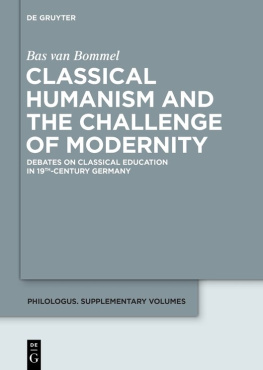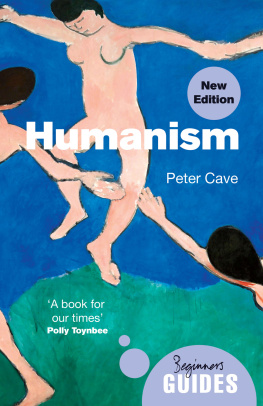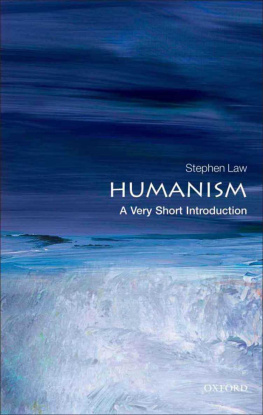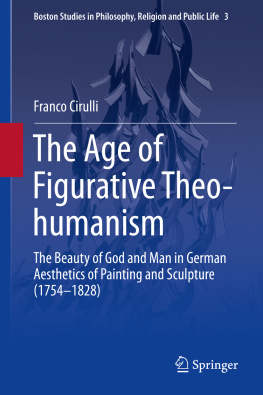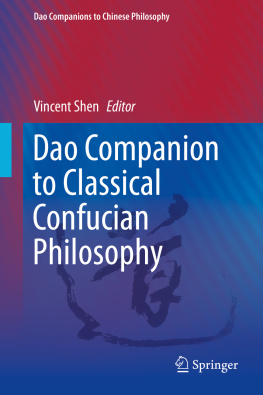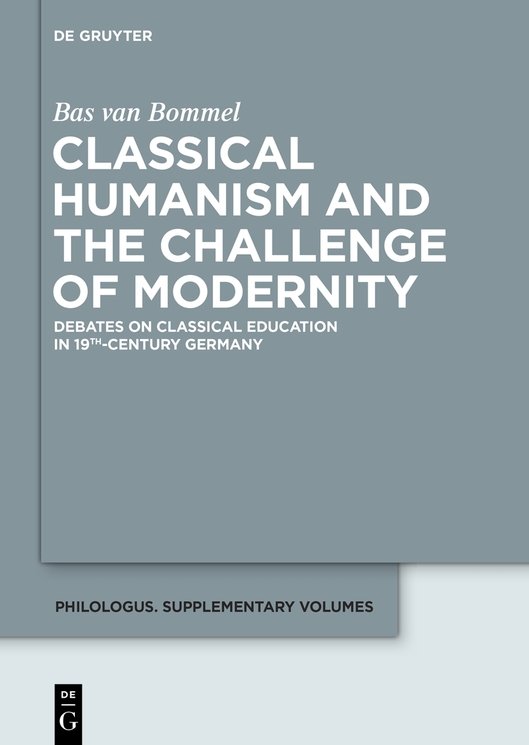Conclusion
The history of classical education in 18th- and 19th-century Germany is usually written from the perspective of modernity. The large majority of studies published between the Second World War and our own time, both on the German humanistic Gymnasium and on German academic scholarship, have sought to expose classical educations complex interrelation with the genesis of modern society. Vast scholarly interest has been spurred by the transformation of classical studies into a professional academic discipline called Altertumswissenschaft, by the rise of the humanistic Gymnasium as a breeding ground for officials of the modern bureaucratic state and by classical educations role in the formation of the typically 19th-century Bildungsbrgertum. Likewise, scholars have attached decisive significance to the innovative ideal of education endorsed by a group of pioneering academic philologists and pedagogues mainly from Prussia who were at the forefront of change and renewal in classical studies in the decades around 1800. This ideal of education, generally known as neohumanism, was distinctly different from the classical humanism of the Renaissance. Whereas traditional humanists focused on the practical imitation of Latin stylistic models, neohumanists embraced typically modern values such as authenticity and historicity. They preferred to study the reputedly original Greeks and aimed at an historical understanding and reconstruction of the classical world in its entirety. This novel legitimation of classical studies has been credited with so much importance that the decades around 1800 are generally seen to have witnessed the replacement of a traditional ideal of humanistic education ultimately inherited from Renaissance humanism by a progressive neohumanistic ideal that bore the clear stamp of Germanys emerging modern society. In this book I have shown that this view is seriously distorted, based as it is on only a small number of academic philologists and pedagogues of exceptional fame, such as Friedrich August Wolf and Wilhelm von Humboldt. The large majority of local headmasters and ordinary teachers, who were employed at Germanys many Latin schools and Gymnasien, embraced an ideal of education that was emphatically traditional. Through a representative case study of the Saxon headmaster Karl Gottfried Siebelis (1769 1843) I have shown that at average German Gymnasien, students were encouraged to elevate themselves to a higher level of humanness (Humanitt) intellectually, aesthetically as well as morally by studying the timeless, classical models of excellence that were provided by canonical Roman and Greek literature. Education focused not only on reading and interpreting, but also on imitating the classics in word and deed. Only by acquiring a truly classical style, by practicing Latin eloquence and by internalising classical doctrines of virtue, one could become human in the full sense of the word. In contrast, Gymnasium education offered little room to the typically neohumanistic prioritisation of Greek and the philosophically coloured ideal of objective historical reconstruction that is often considered characteristic of 19th-century humanism. Both by its primary focus on exemplary Latin (and to a lesser extent Greek) literature and by its practical bias towards imitation, the ideal of education endorsed at 19th-century German Gymnasien had much in common with the educational ideal of Renaissance humanism. As classical schoolteachers vastly outnumbered their academic colleagues, we may conclude that the dominant educational ideal in late 18th- and 19th-century Germany was not neohumanism but classical humanism.
Despite its venerable aspect, classical humanism was exposed to many challenges in the period 1770 1860. The rise of professional science, the increasing need for Brger education and the emergence of 19th-century restorative politics forced classical humanists to defend their ideal of education in a manner that had been unnecessary and unthinkable a century before. Up to now, these challenges have mostly been described in oppositional terms. The transformation of classical studies into Altertumswissenschaft, the competition with the hhere Brgerschule and the morally conservative climate in the decades following the wars of Liberation are commonly seen as having gradually undermined and marginalised the position of humanistic education. In this book, however, I have shown that the outward forces acting on classical humanism were anything but diametrically opposed to it. On the contrary, continuities and innovations often coexisted peacefully and regularly influenced each other. Firstly, in the course of the period 1770 1860, classical humanists were repeatedly urged to redefine their educational ideal in a distinctly modern way. In the late 18th century, they underscored classical educations importance to the common good, a major value at a time that witnessed the genesis of the public sphere. In the Vormrz period, classical humanists emphasised classical educations compatibility with Christian faith and morality, since Christian faith and morality were widely seen as jeopardised by the eras political and social climate. Yet this eagerness on the part of classical humanists to underline classical educations compatibility with modern values and ideals did not point to an apostasy from humanistic beliefs, nor to a radical transformation of classical humanism itself. While highlighting properties that typically related to current needs and interests, most classical humanists remained wholeheartedly loyal to the constitutive views of their creed. Secondly, the continuity of classical education at the German Gymnasien proved compatible with innovation in other areas. Friedrich August Wolf and Friedrich Creuzer, who launched a concept of academic philology that clearly distinguished itself from classical studies as practiced in the past, advocated a clearly traditional form of school education. Moritz Drobisch and Eduard Eyth, who for various reasons wanted to reduce the classics curricular position, were anything but enemies of traditional, classical education, singing its praises in the very works in which they criticised its predominance. Most sceptics of the traditional classical schools, then, were not bent on combating classical humanism as such, but on establishing new kinds of education and learning alongside it. Thirdly, and most importantly, even the most radical innovators and critics of traditional classical education were inspired by humanistic ideals. Wolf and Creuzer conceived of Altertumswissenschaft as the highest form of humane education. Advocates of Brger education propagated the Brgerschule as a breeding ground of Humanitt. Christian critics of classical education pointed out that Christian religion and morality could not dispense with true humanness. We must conclude, then, that 19th-century classical humanism was anything but a fossilised relic of the past, exposed to the challenges of an increasingly non-humanistic climate. Such a view, as we can now see, is very nearly the opposite of the truth. Up to the 1860s, nearly all debates on higher education were conducted within the context of humanistic ideas. Thus, the period 1770 1860 in its entirety can justly be called a heyday of educational humanism.
Yet despite the major adaptability of humanistic values, classical humanism suffered from various internal tensions. It was far from clear, for example, whether new applications of humanistic ideas contributed to the transmission of humane values in equal measure as traditional, classical education. Many classicists became convinced that Wolf s ideal of historical reconstruction tended to detract from the very ideal of Humanitt it was supposed to realise. Many humanists did not believe that Brger education, no matter its humanistic objectives, could as efficiently elevate pupils above the material world as the ideal subject matter provided by the Greek and Roman classics. The real challenge to classical humanism, then, was not posed by competing educational ideals, but by competing strategies to achieve traditional, humanistic goals. Classical humanism was challenged, not by being reduced, but by being broadened. For a long time, however, the persistence and broadening of classical humanism did not work against, but rather reinforced each other. It was because humanistic ideals appealed to educationalists of widely different signature that they retained a remarkable vigour and dynamism. Classical humanism was hugely popular not only because it was propagated by a large number of ideal type humanists such as Karl Gottfried Siebelis, but also because it had the potential of inspiring educationalists of distinctly different persuasions. Conversely, the persistence of classical humanism provided a fertile ground for new initiatives and enterprises. Innovators and critics of traditional classical education, far from being compelled to design new educational theories ex nihilo, elaborated on widespread, humanistic modes of thought that had been handed down by tradition. The persistence of classical humanism on the one hand and the challenges to which it was subjected on the other should not be understood as opposing but as mutually reinforcing forces. It was the lively interplay between persistence and adaptation that ensured the survival of classical humanism throughout the century. Far from being a rigid set of ideas that threatened to collapse each time it was challenged, classical humanism time and again proved capable both of assimilating external influences and of giving rise to new initiatives. It is best seen, therefore, not as a dried-out remnant of a dying past, but as the continuation of a living tradition.

